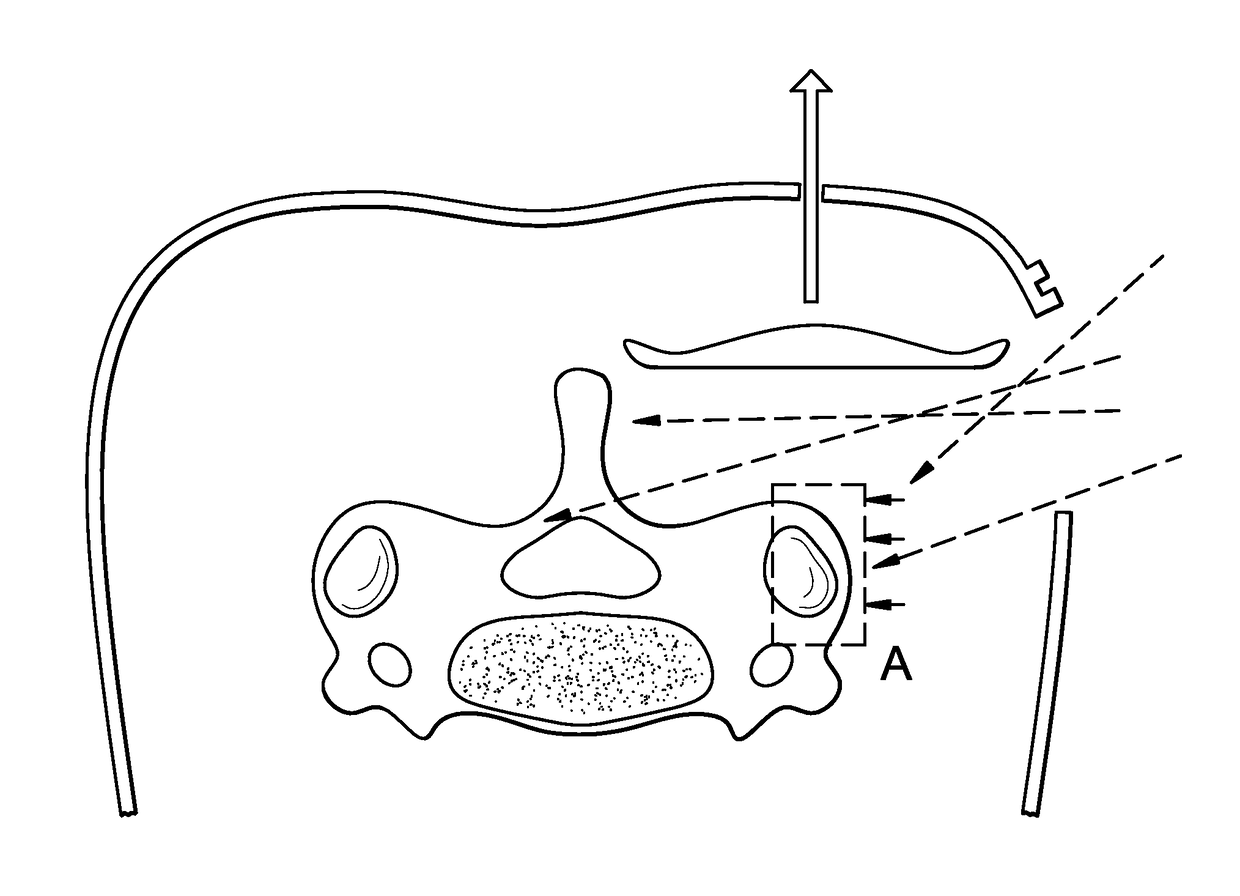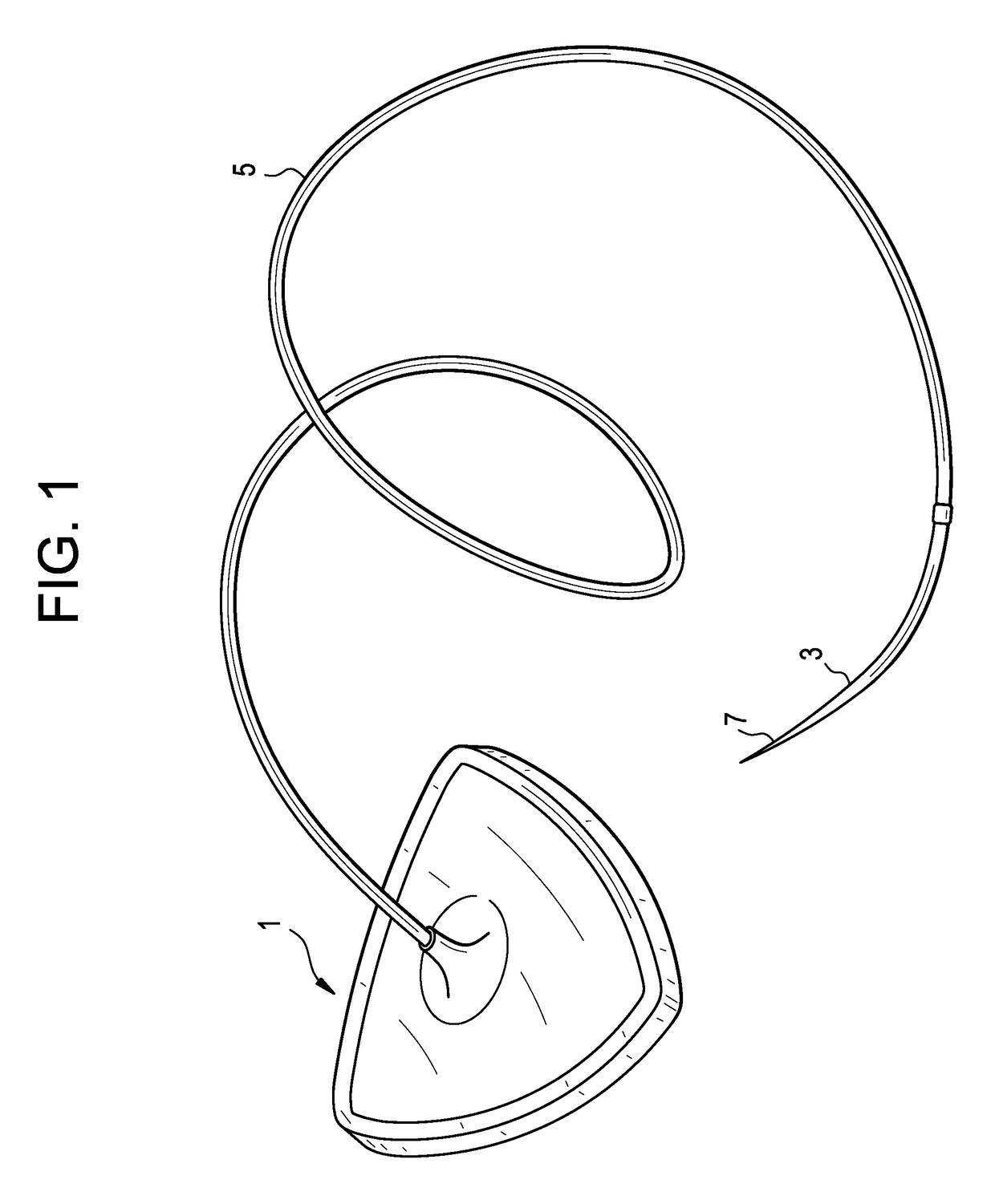Method and devices for a sub-splenius / supra-levator scapulae surgical access technique
a subspleen/supralever scapulae and surgical access technology, applied in the field of methods and devices for subspleen/supralever scapulae surgical access technique, can solve the problems of radically different, potential disproportionate problems related, etc., and achieve the effect of convenient access
- Summary
- Abstract
- Description
- Claims
- Application Information
AI Technical Summary
Benefits of technology
Problems solved by technology
Method used
Image
Examples
example i
[0136]The patient is positioned prone, but the surgeon is comfortably sitting. This approach can be unilateral or bilateral, normally for access up to C2-T1. A longitudinal skin incision is based on the lateral boarder of the Trapezius, preferably in the range of 20-30 mm long and radiographically localized if needed. The superficial fascia is opened (20-85 mm or more) preferably with Metz along the lateral Trapezius boarder in the rage of (30-35 mm). The Levator scapulae is digitally identified laterally, and the deep fascia opened between the Splenius and Levator scapulae muscle. This plane can be opened bluntly with finger dissection or with metz from 10 mm (up to 150 mm) as needed. The Spinal Accessory nerve is safe, resting anteriorly and laterally on the anterior boarder of Levator Scapulae, and is not retracted or involved in the approach. Blunt digital dissection is directed straight medially and quickly identifies the lateral mass and the dorso-lateral corner of the facet j...
PUM
 Login to View More
Login to View More Abstract
Description
Claims
Application Information
 Login to View More
Login to View More - R&D
- Intellectual Property
- Life Sciences
- Materials
- Tech Scout
- Unparalleled Data Quality
- Higher Quality Content
- 60% Fewer Hallucinations
Browse by: Latest US Patents, China's latest patents, Technical Efficacy Thesaurus, Application Domain, Technology Topic, Popular Technical Reports.
© 2025 PatSnap. All rights reserved.Legal|Privacy policy|Modern Slavery Act Transparency Statement|Sitemap|About US| Contact US: help@patsnap.com



